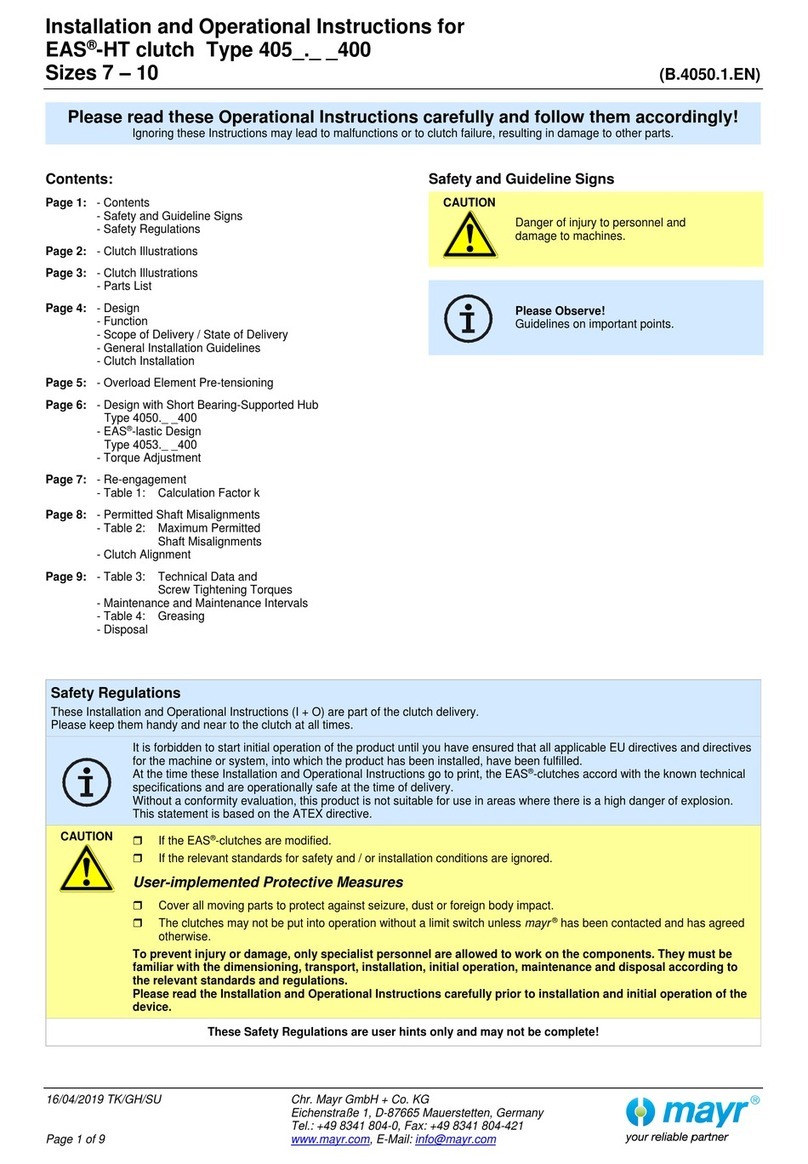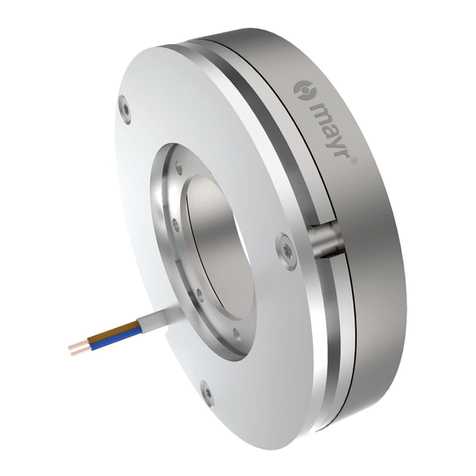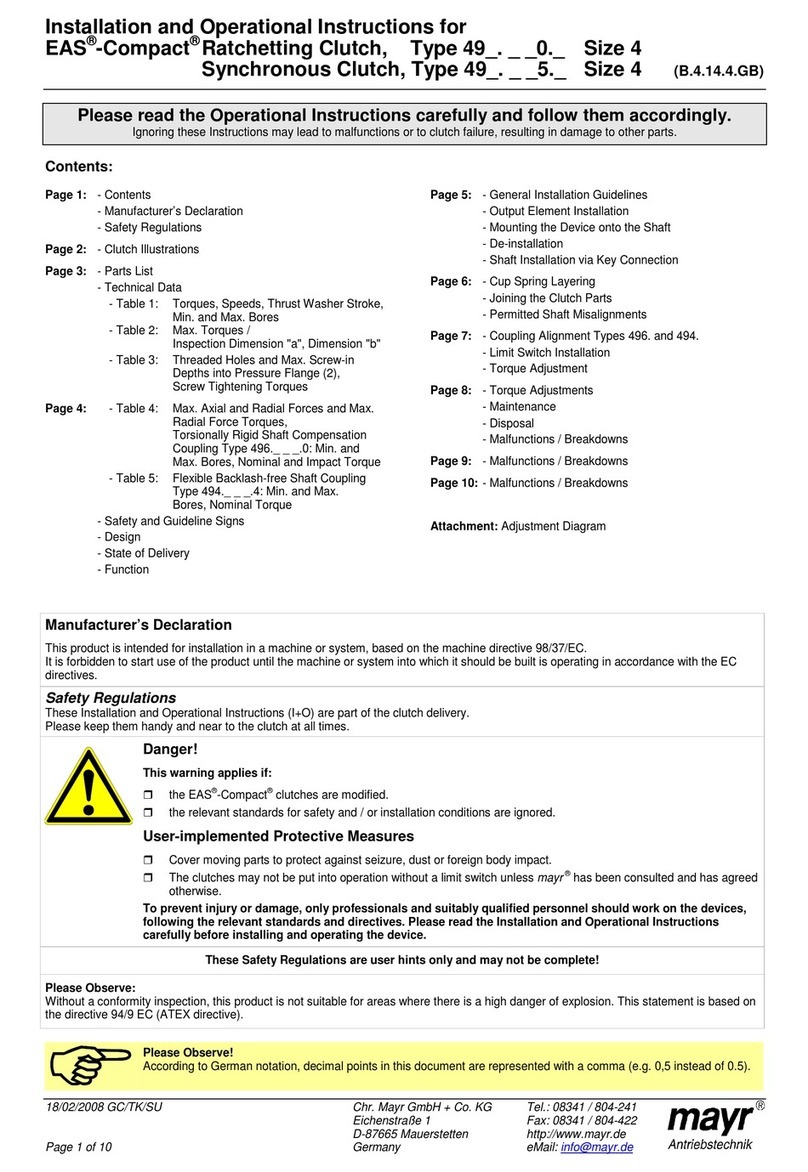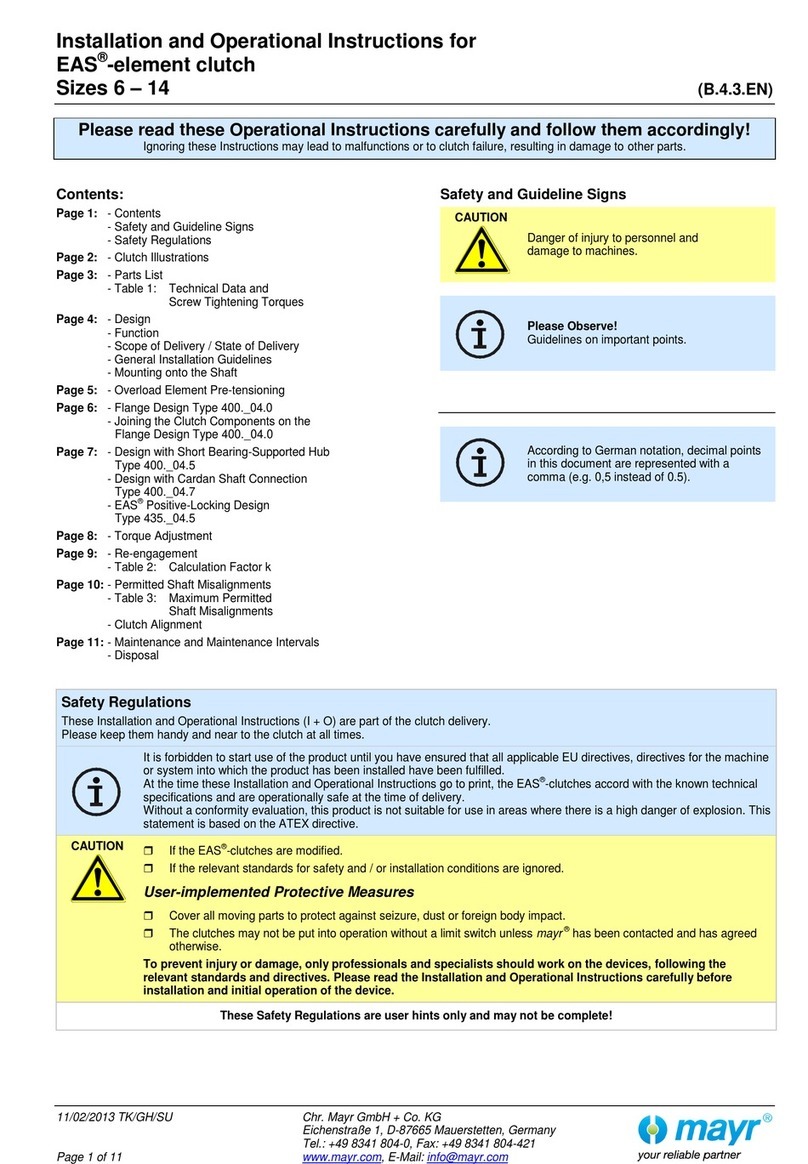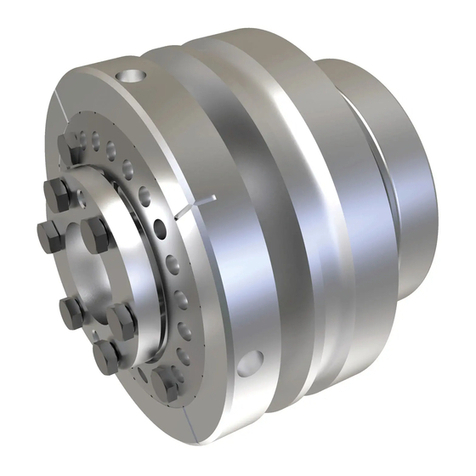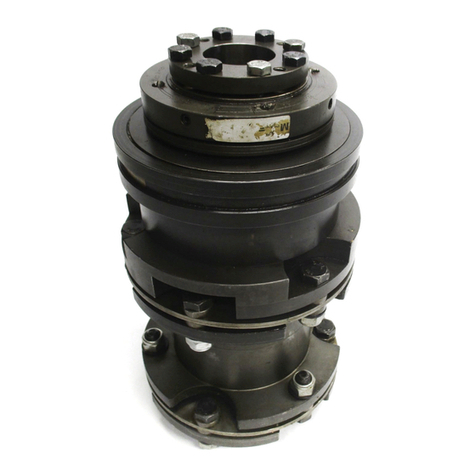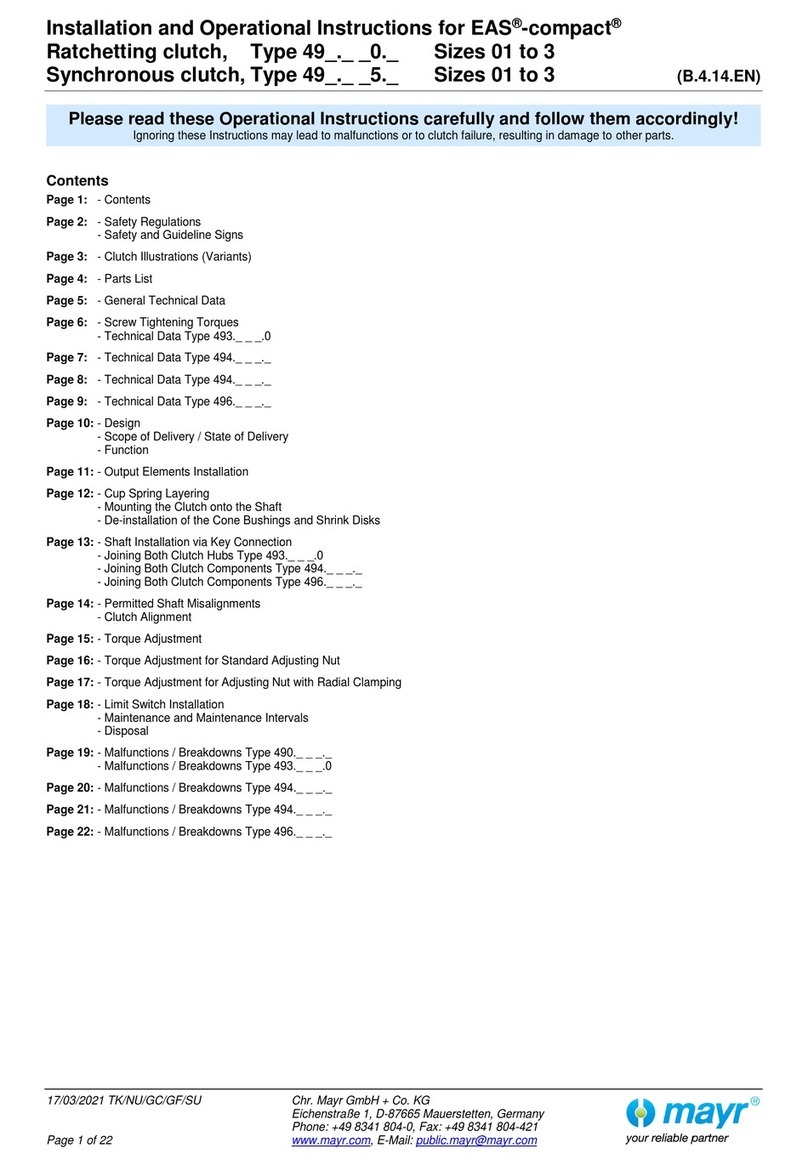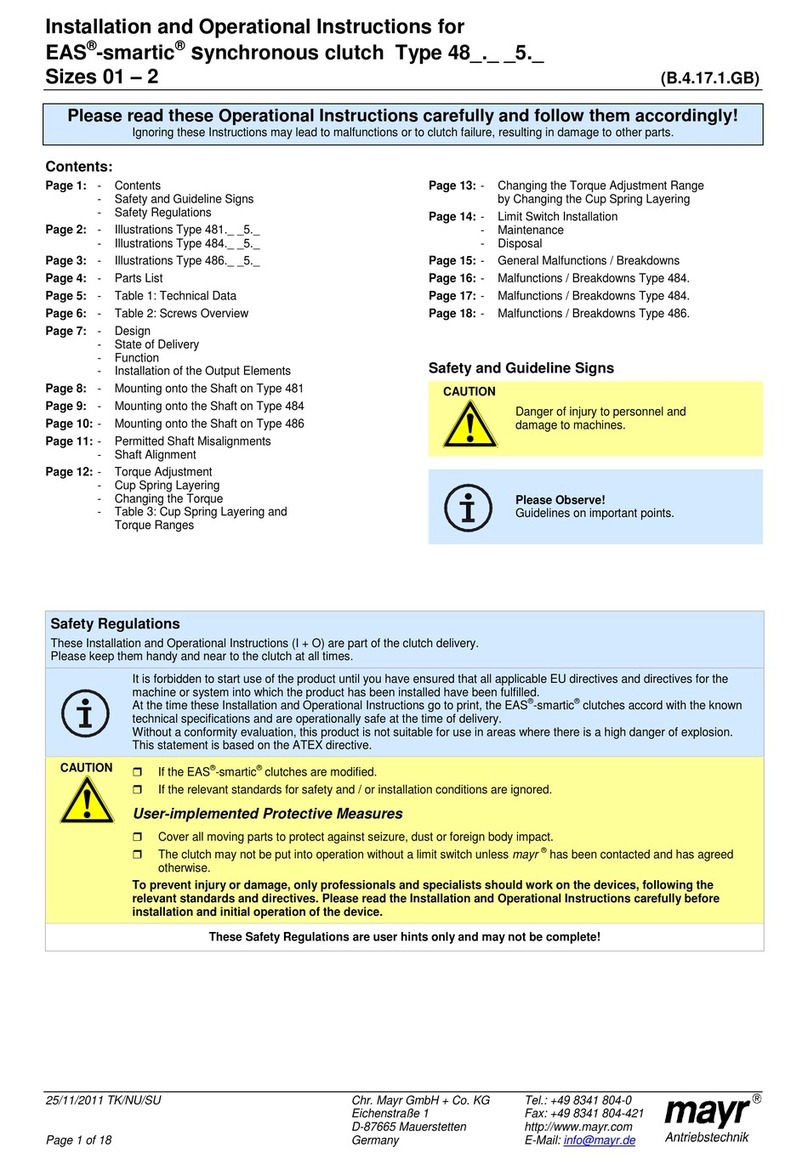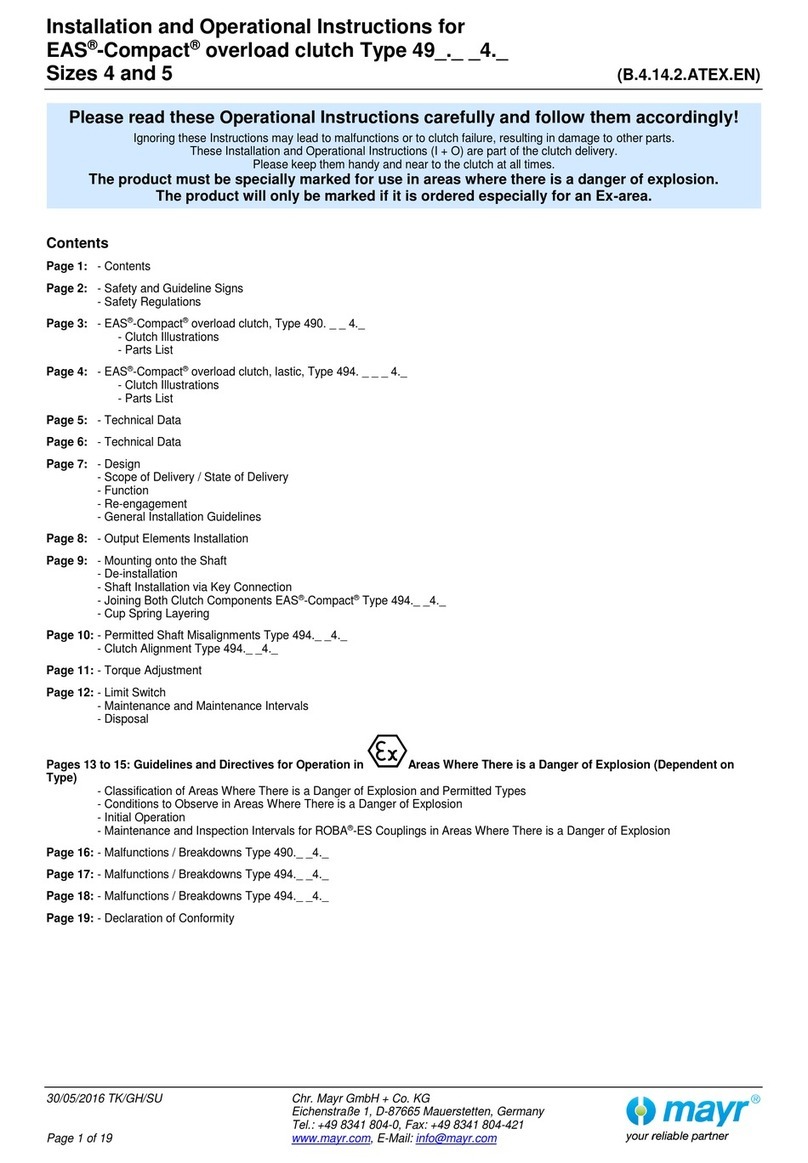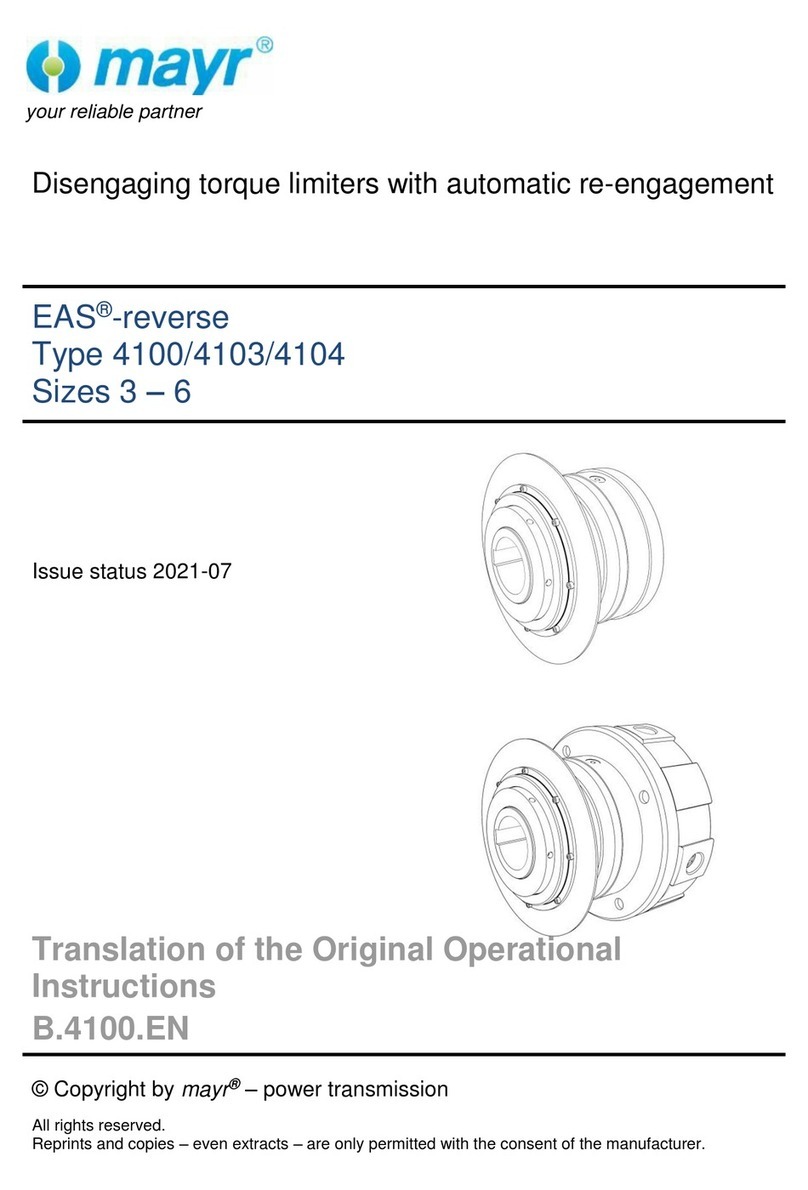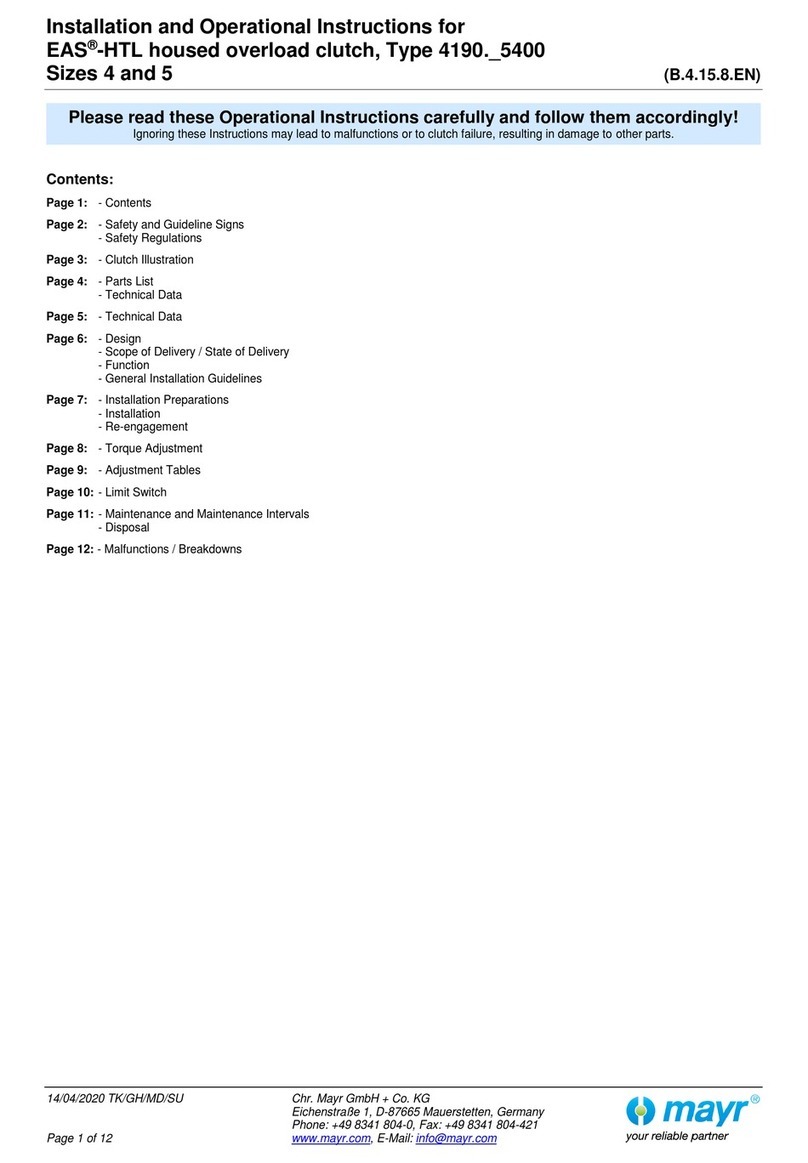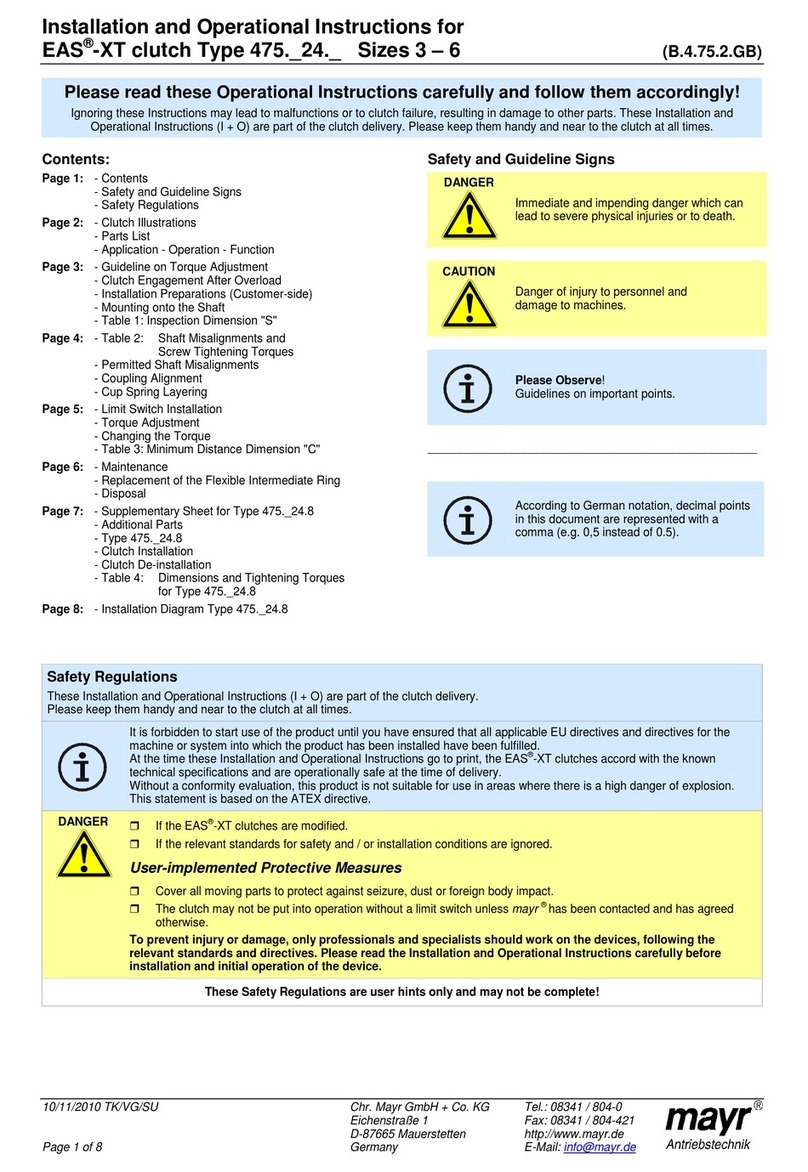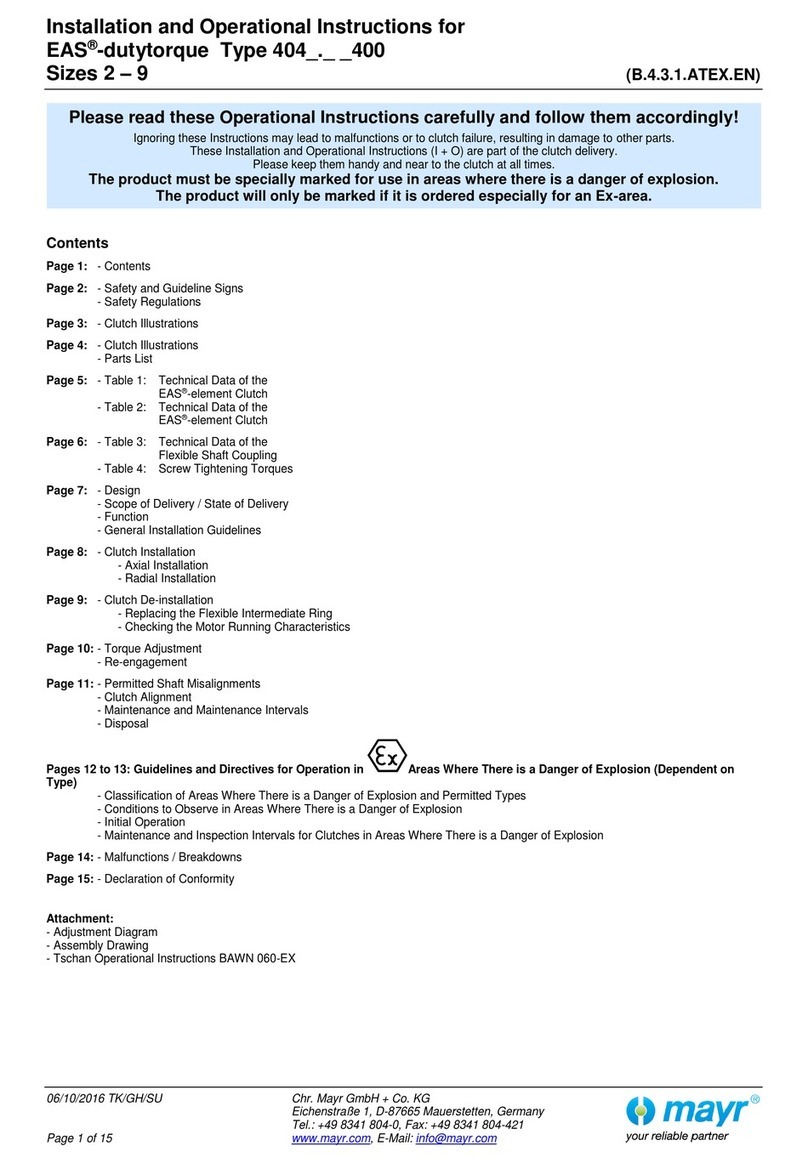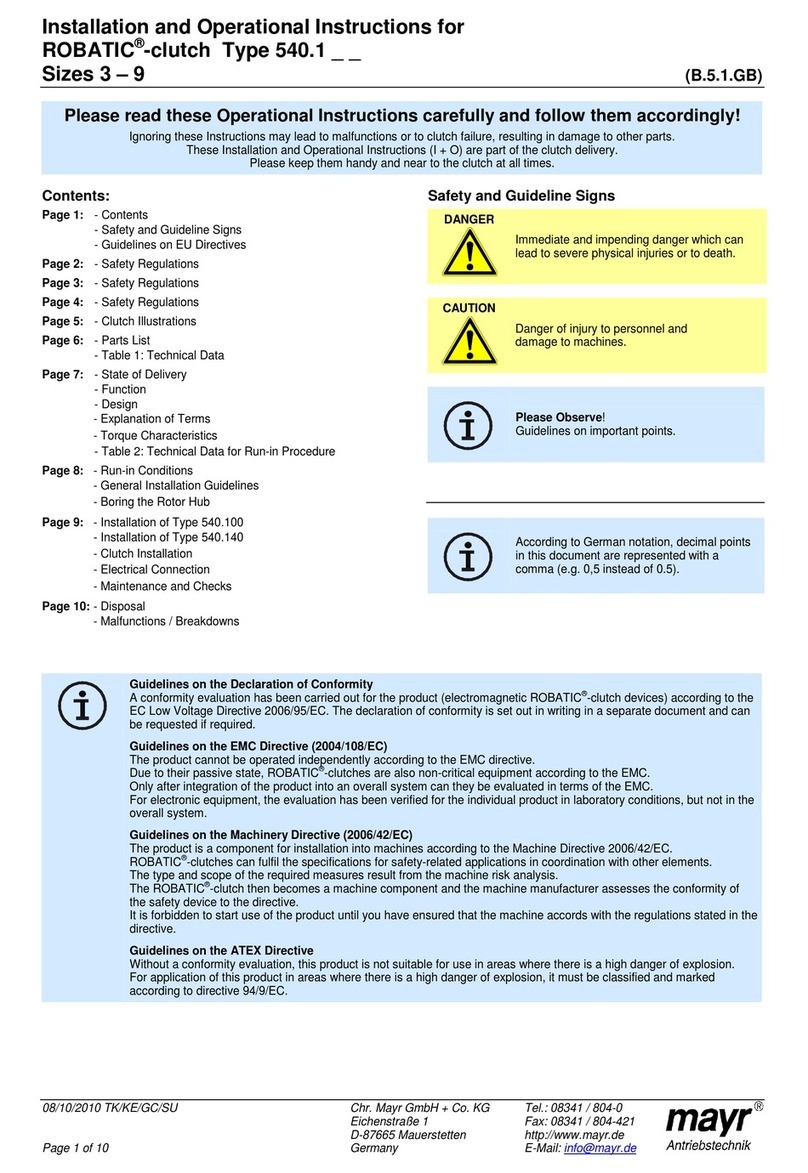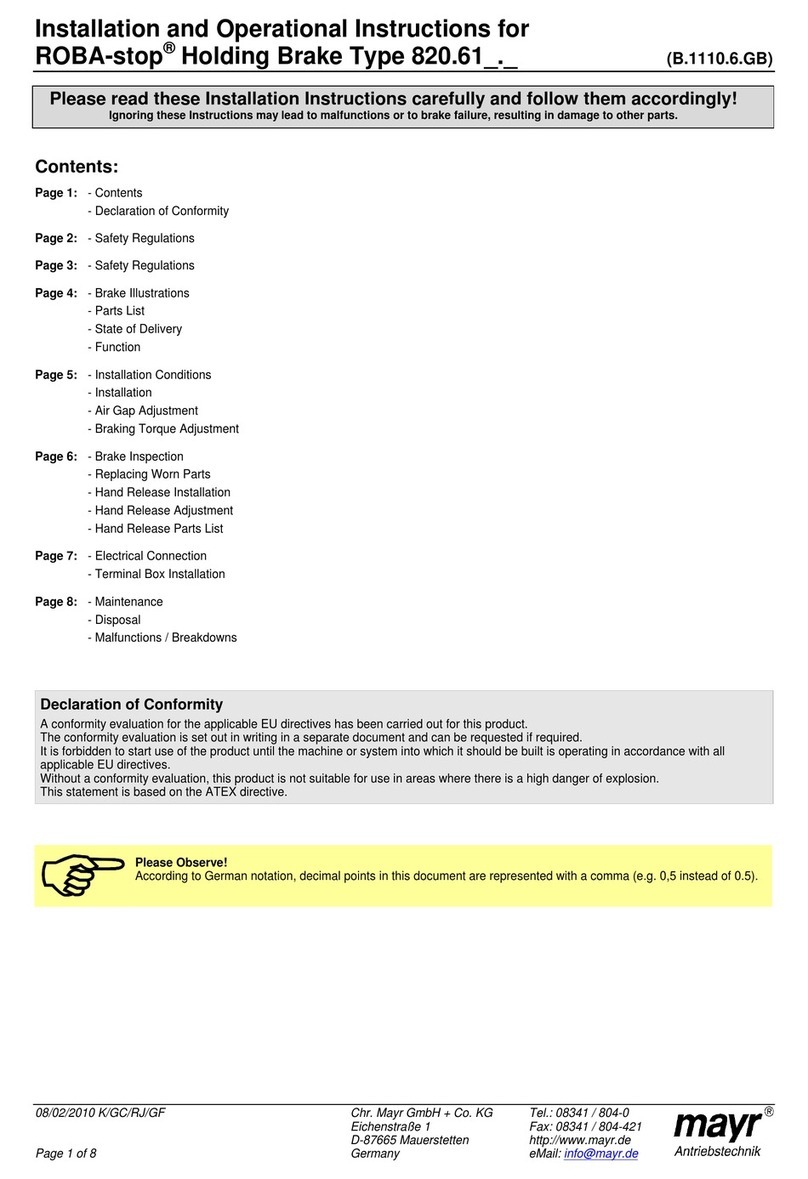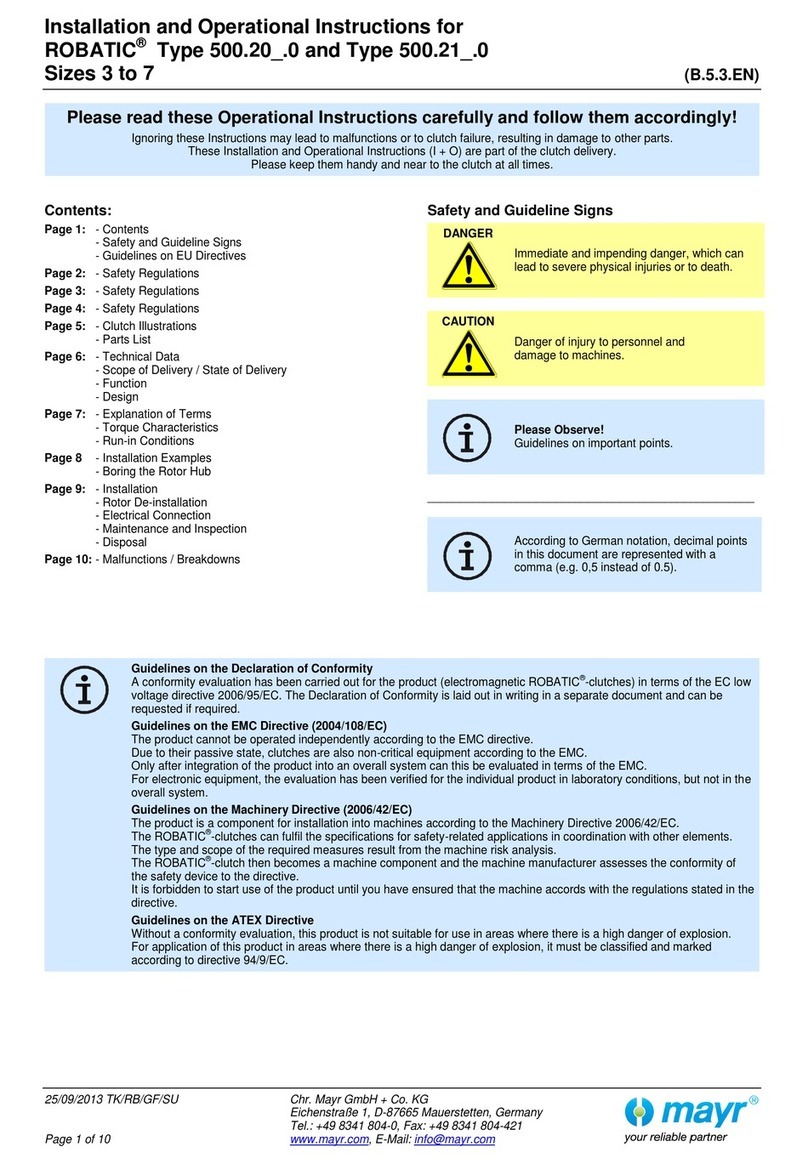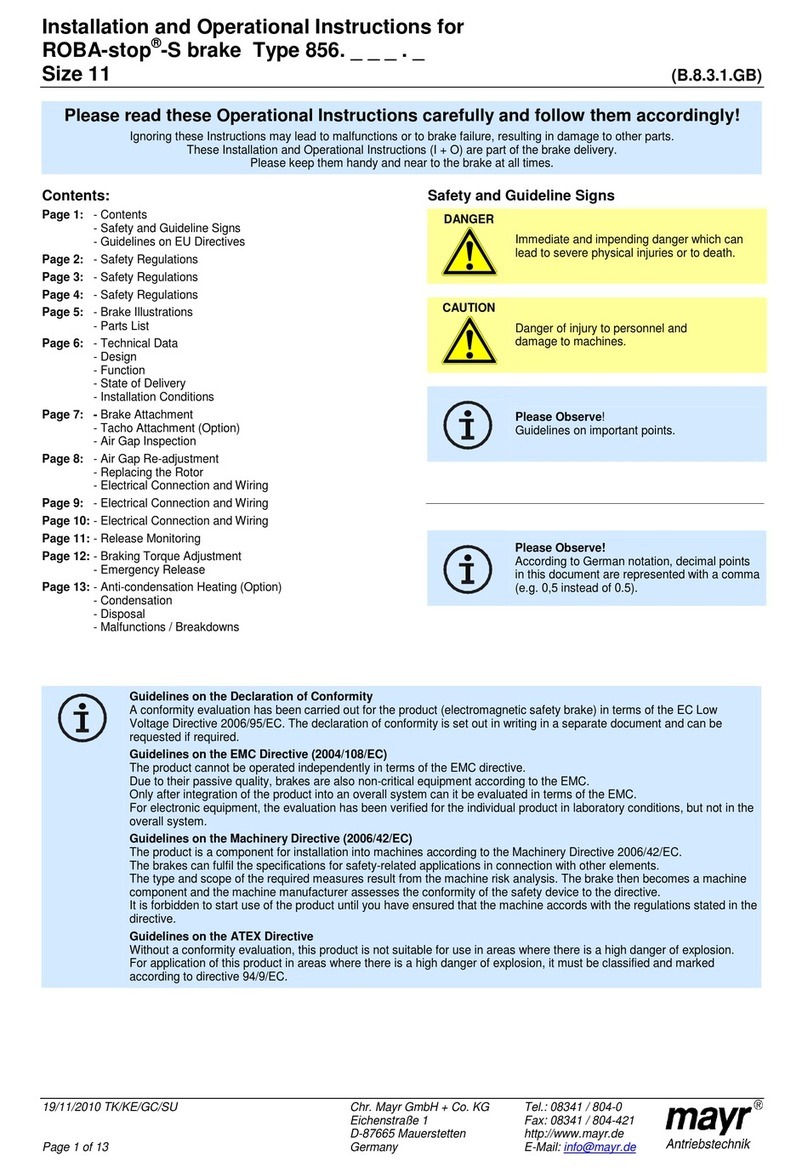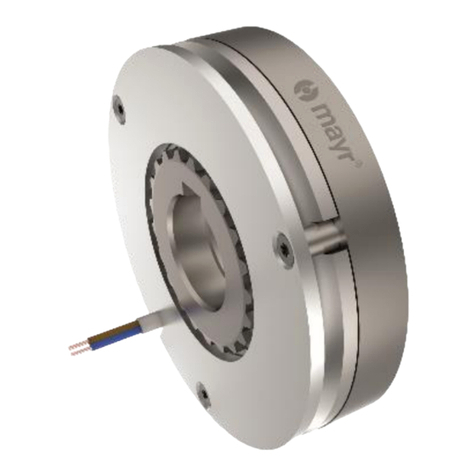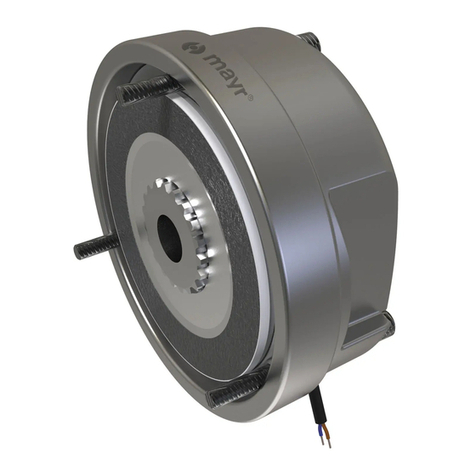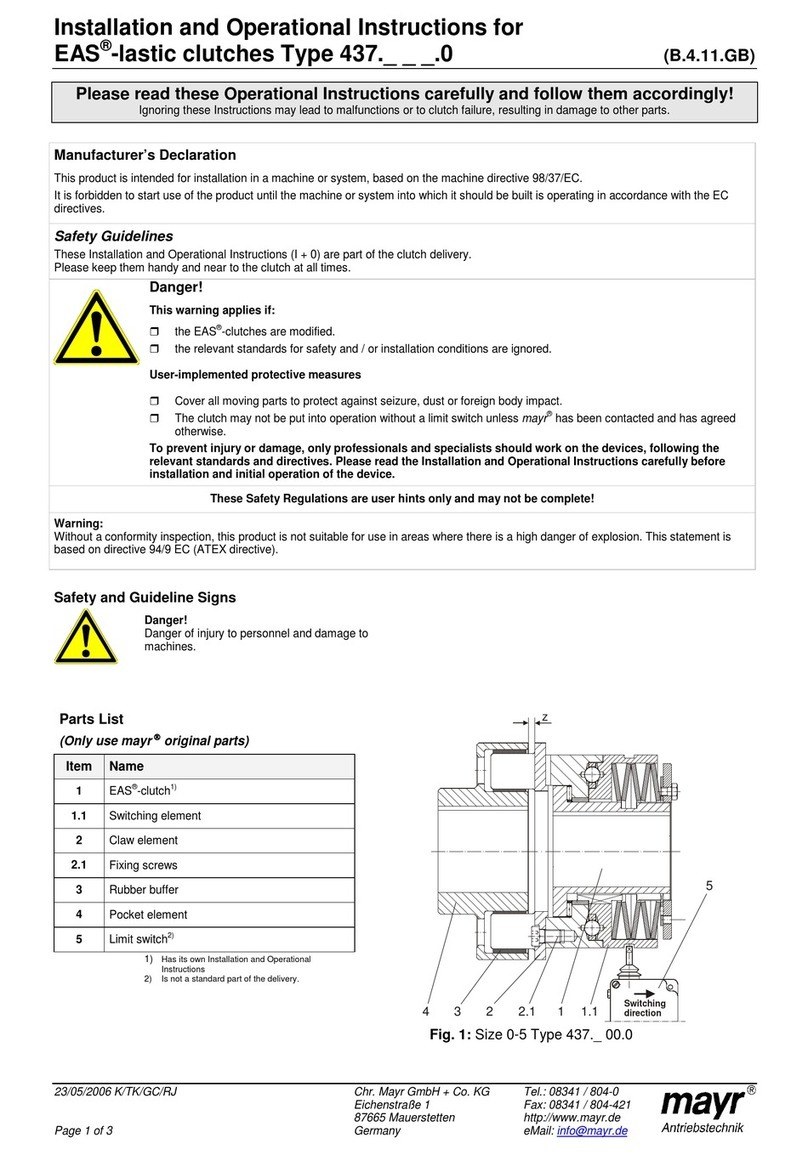Guidelines on the Declaration of Conformity
A conformity evaluation has been carried out for the product (electromagnetic safety brake) in terms of the
EU Low Voltage Directive 2014/35/EU and the RoHS 2011/65/EU with 2015/863/EU. The Declaration of
Conformity is laid out in writing in a separate document and can be requested if required.
Guidelines on the EMC Directive 2014/30/EU
The product cannot be operated independently according to the EMC Directive.
Due to their passive state, brakes are also non-critical equipment according to the EMC.
Only after integration of the product into an overall system can this be evaluated in terms of the EMC.
For electronic equipment, the evaluation has been verified for the individual product in laboratory conditions,
but not in the overall system.
Guidelines on the Machinery Directive 2006/42/EC
The product is a component for installation into machines according to the Machinery Directive 2006/42/EC.
The brakes can fulfil the specifications for safety-related applications in coordination with other elements.
The type and scope of the required measures result from the machine risk analysis. The brake then be-
comes a machine component and the machine manufacturer assesses the conformity of the safety device to
the directive.
It is forbidden to start initial operation of the product until you have ensured that the machine accords with
the regulations stated in the directive.
Guidelines on the EU Directive 2011/65/EU (RoHS II) with 2015/863/EU (RoHS III –from 22 July 2019)
These restrict the use of certain hazardous substances in electrical and electronic devices as well as in
products / components (category 11), the proper operation of which is dependent on electric currents and
electromagnetic fields. Our electromagnetic products / components fulfill the requirements laid down
in the RoHS Directive(s), taking into account the valid exceptions (according to Appendix III and IV
RoHS (2011/65/EU) with delegated Directives (EU) 2018/739-741 from 01.03.2018 for Category 11 –
until 21 July 2024) and comply with the RoHS.
Guidelines on the ATEX Directive
Without a conformity evaluation, this product is not suitable for use in areas where there is a high danger of
explosion.
For application of this product in areas where there is a high danger of explosion, it must be classified and
marked according to Directive 2014/34/EU.
Guidelines on the REACH Regulation (EC) No. 1907/2006
of the European Parliament and of the Council concerning the Registration, Evaluation, Authorization and
Restriction of Chemicals (REACH). This regulation governs the manufacture, placing on the market and use
of chemical substances in preparations and, under certain conditions, also of substances in finished prod-
ucts.
mayr®power transmission exclusively manufactures products (articles: overload clutches, shaft couplings,
electromagnetic brakes / clutches, permanent magnet motors and the appropriate control modules / rectifi-
ers) in accordance with the definition in Article 3 of the REACH Regulation.
mayr®power transmission is aware of its responsibility towards the environment and society. As a matter of
precaution, we pay attention to particularly critical substances in the supply chain and strive to avoid using
any such substances completely or to replace them in the near future.
In compliance with Article 33 of the REACH Regulation, we would like to inform you that in our overload
clutches and shaft couplings, electromagnetic brakes / clutches as well as permanent magnet motors, sub-
components with a lead content of > 0.1% are or may be used. These are manufactured from raw materials
such as machining steel / copper alloys (e.g. brass, bronze) or aluminum alloys.
Besides high-melting-point (HMP) solders (electronics), this also affects integrated machine elements as
well as standard parts (screws / nuts / set screws / pins / etc.) among others, provided that the relevant
standards allow this.
For example, lead can occur as an alloying element with more than 0.1 mass percent, based on the respec-
tive total mass, in screws and set screws of the following property classes: 4.6, 4.8, 5.8, 6.8, 04, 4, 5, 6, 14H,
17H, 22H, 33H, 45H.
Products made from copper and copper alloys do not fall within the area of applicability of Regulation (EC)
No. 1272/2008 of the European Parliament and Council on the Classification, Labeling and Packaging of
Substances and Mixtures (CLP Regulation) and are therefore not subject to the classification and labeling
obligations.
To our knowledge, when used for their intended purpose and disposed of correctly (recycling), the contained
substances pose no threat to health or environment.
We would hereby like to point out that the proportion of lead used here is not prohibited according to the
REACH Regulation. It is merely necessary to declare the use of this substance.
